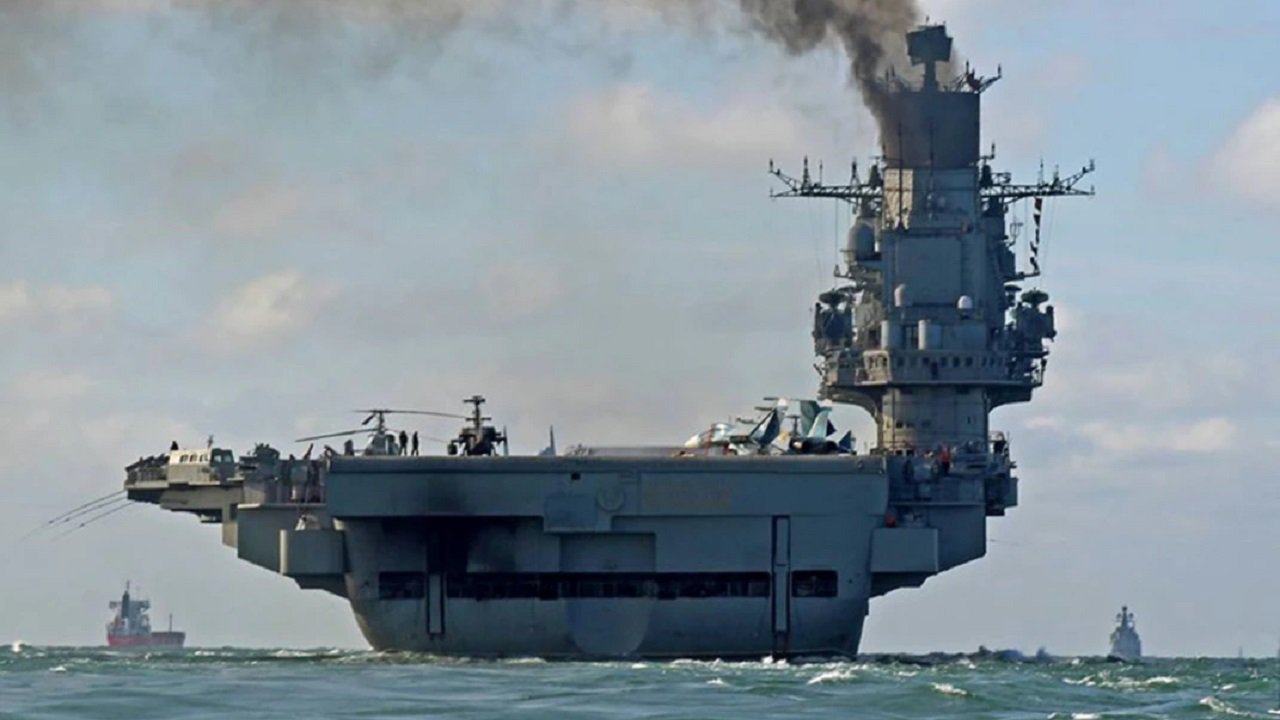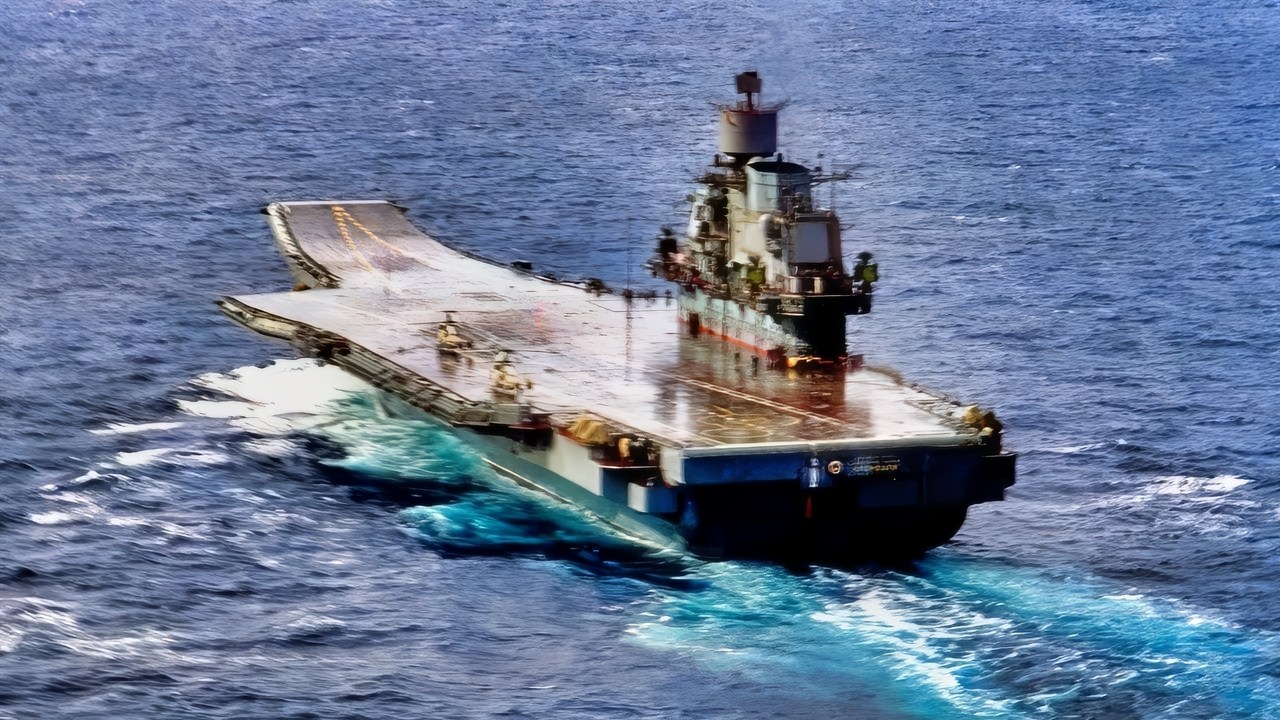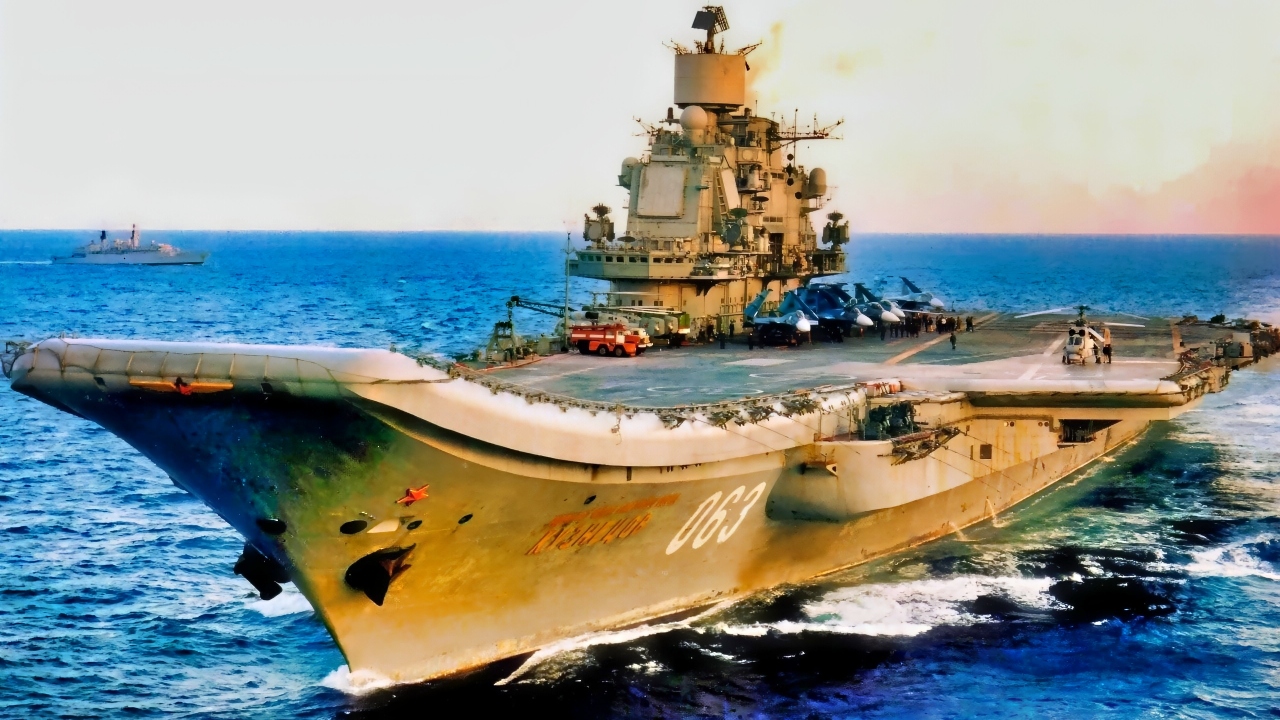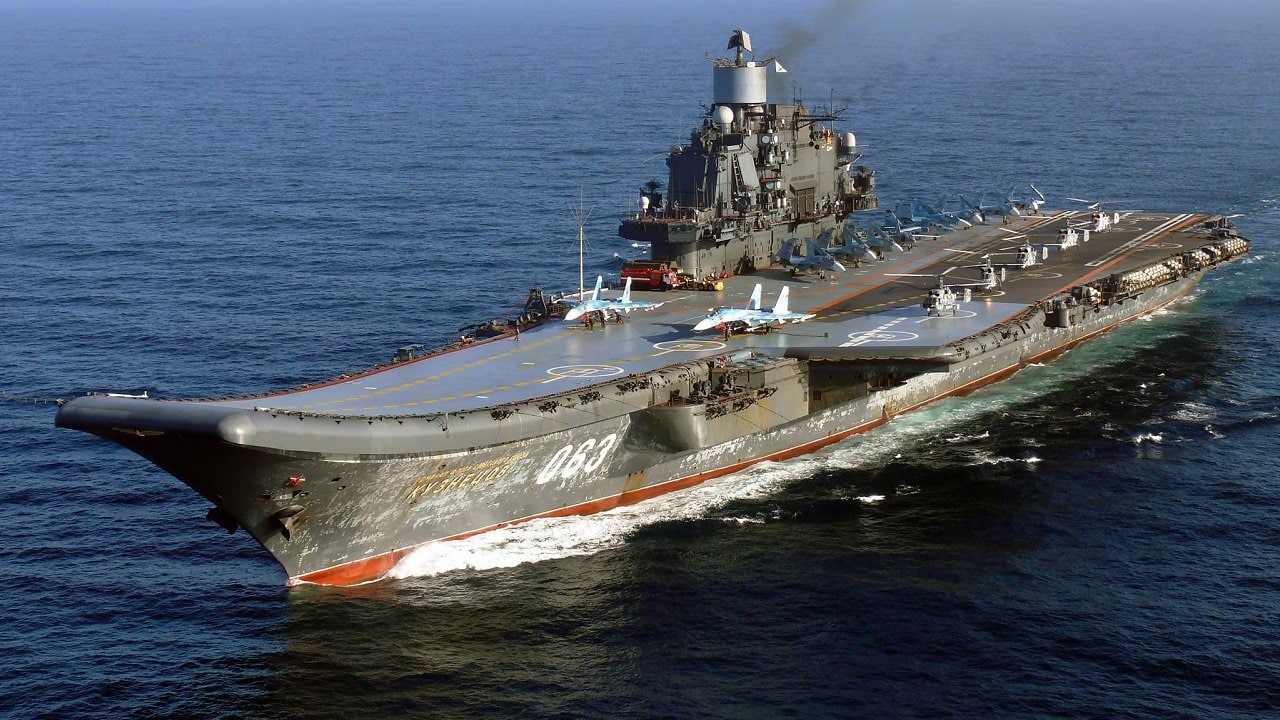-Russia’s Shtorm-class, or Project 23000, was advertised as a nuclear-powered “supercarrier” to rival the U.S. Nimitz-class and carry up to 100 aircraft.
-In reality, the flagship Admiral Kuznetsov has rotted in dry dock for years, its crew reassigned to fight in Ukraine, and no new carrier is under construction.

Admiral Kuznetsov. Image Credit: Creative Commons.

Admiral Kuznetsov Aircraft Carrier Russia. Image Credit: Creative Commons.
-Moscow lacks the money, shipyard capacity, and political bandwidth to build Shtorm, especially since its only true carrier yard is now in independent Ukraine.
-A smaller light-carrier concept also faces aircraft and infrastructure gaps. For a sanctions-strangled Russia bleeding men and armor, big-deck carriers are a distant, unaffordable dream.
-In 4 Words: This Warship Never Sails
Whatever Happened to the Russian Shtorm Aircraft Carrier?
Not too long ago, the Russians were touting a new aircraft carrier intended to rival the U.S. Navy’s Nimitz-class. The Shtorm would carry advanced jets, such as the Su-57 stealth fighter.
However, the Russian Navy does not currently have a new aircraft carrier under construction. It has continued to design potential new carriers—these include the nuclear-powered Project Shtorm, as well as a more recent design for a light carrier.
Russia’s only operational carrier, the Admiral Kuznetsov, has been in dry dock for eight years and is likely to be scrapped. Much of the Admiral Kuznetsov’s crew was even redeployed to Ukraine, where some 1,500 sailors were reorganized to form a “frigate” battalion under the 1st Guards Tank Army. It has reported combat activity near Kharkiv and Pokrovsk.
Experts express skepticism about Russia’s financial and logistical ability to build a new carrier in the near future.
Shtorm-Class Carrier, Real Or Pipe Dream?
Russia’s Shtorm-class carrier, also known as Project 23000, was supposed to be the future of the Russian Navy. But the likelihood of it ever being built appears slim at best, due to the state of the sanctions-hobbled Russian economy and the ongoing war in Ukraine.
According to Global Security, the idea for the Shtorm was born in 2018, as the Russian Navy considered options for a new aircraft carrier. One option focused on a conventionally powered vessel with a displacement of around 70,000 tons. This would be slightly larger than the 58,600–67,500-ton Admiral Kuznetsov.
The other option would be nuclear-powered and might have a larger displacement. It would be larger than France’s 42,000-ton Charles de Gaulle, but not as large as the 100,000-ton American supercarriers.

Admiral Kuznetsov Aircraft Carrier Russia. Image Credit: Creative Commons.

Admiral Kuznetsov back in 2011. Image Credit: Royal Navy.

Admiral Kuznetsov. Image Credit: Creative Commons.
The Shtorm is meant to enter service in the navy by 2030, and experts expect that if that happens, its base would be Severomorsk (1,880 kilometers north of Moscow).
The take-off deck would cover an area equivalent to three football fields. It would feature four lanes of varying lengths, along with a mixed launching system that includes both springboard and springboard-catapulting options.
According to Army Recognition, the Shtorm would be even bigger. It is planned to have a full displacement of 95,000 tons, putting it in the same class as the U.S. Navy’s Nimitz-class carriers, which displace between 90,000 and 100,000 tons.
The Nimitz-class, which has been the backbone of U.S. naval air power for decades, measures 1,083 feet in length, almost identical to the projected length of the Shtorm. This scale allows a carrier to operate large air wings; the Nimitz-class can carry up to 90 aircraft, while the Shtorm would be able to deploy up to 100 aircraft, offering a slight edge in air group capacity.
The chances of Russia building this in the next few decades are miniscule at best.
Light Carrier Design
The Nevskoye Design Bureau unveiled a design for a lighter carrier, estimated to displace around 45,000 tons. This carrier could be nuclear or powered by gas turbines and might incorporate a ski jump and electromagnetic catapults. The design is in the early stages of development.
The problem with this plan is that the MiG-29 is unsuitable for launch via an electromagnetic catapult. Newer Russian aircraft have not been developed for carrier operations.
Russia’s Carrier Shipbuilding Wasn’t Done In Russia
Limited Infrastructure is a significant issue. Russia lacks a single shipyard large enough to construct a vessel the size of a supercarrier, posing a significant logistical hurdle.
More important, the Soviet Union’s only carrier-building facility was the Mykolaiv shipyard on the Black Sea, located in what is now Ukraine. Given Russia’s invasion, Ukraine is not likely to ever make these yards available to Russia again.
Financial constraints caused by sanctions, and the sad state of the Russian economy, will not be fixed in the next decade.
The ambitious nature and enormous cost of building a new aircraft carrier, particularly a nuclear one, make it a significant financial challenge that will be too much for Russia.
The poor state of Russia’s shipyards is highlighted by the sorry condition of the Admiral Kuznetsov. The carrier has been in dry dock since 2017, yet no discernible work has been done on it. It now appears that the Russian government is contemplating selling it for scrap.
The shipyards where the Admiral Kuznetsov is currently stationed are not fully capable of overhauling this vessel, let alone of building a larger, more modern, nuclear-powered aircraft carrier from scratch.
Russia’s Talk Is Just That
The war in Ukraine, which was supposed to be over in a couple of weeks, is nearing its fourth year and has been a meat grinder for Russia’s military. Its soldiers are being forced to use mothballed tanks from the early 1960s and enter combat in golf carts and dirt bikes.
Building an aircraft carrier, which is a power projection platform, makes no sense when Russia’s own coastal borders are threatened. Ukraine didn’t even have a Navy to speak of, yet it sank or chased away Russia’s Black Sea Fleet using Harpoon missiles.
Moscow’s continual bold statements fool no one. Vladimir Putin’s regime talks as if Russia is still a conventional superpower. It is not, as the more than a million casualties it has suffered in Ukraine show.
What would Russia do with one carrier? Building it is a pipe dream, but even if they did build one, it would serve little purpose. Further, it would become a target for Ukraine long before it was ever ready to set sail.
Any future Russian carrier construction is likely decades away.
About the Author: Steve Balestrieri
Steve Balestrieri is a National Security Columnist. He served as a US Army Special Forces NCO and Warrant Officer. In addition to writing on defense, he covers the NFL for PatsFans.com and is a member of the Pro Football Writers of America (PFWA). His work was regularly featured in many military publications.
More Military
The U.S. Military Purchased 2 Russian-Made Mach 2.35 Su-27 Flanker Fighters
The B-2 Spirit Stealth Bomber Has a Message for the U.S. Air Force
To The Bottom In Minutes: China Has Countless Missiles Ready to Sink U.S. Navy Aircraft Carriers
